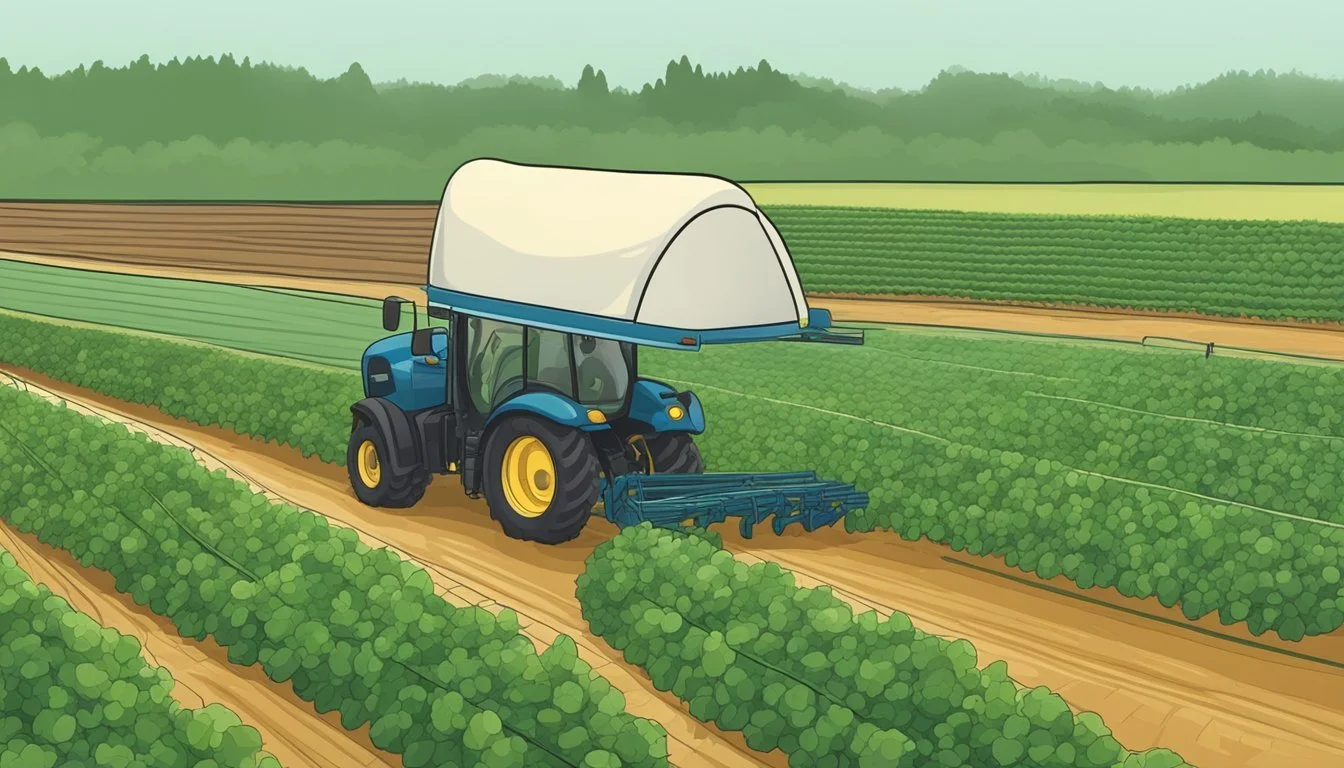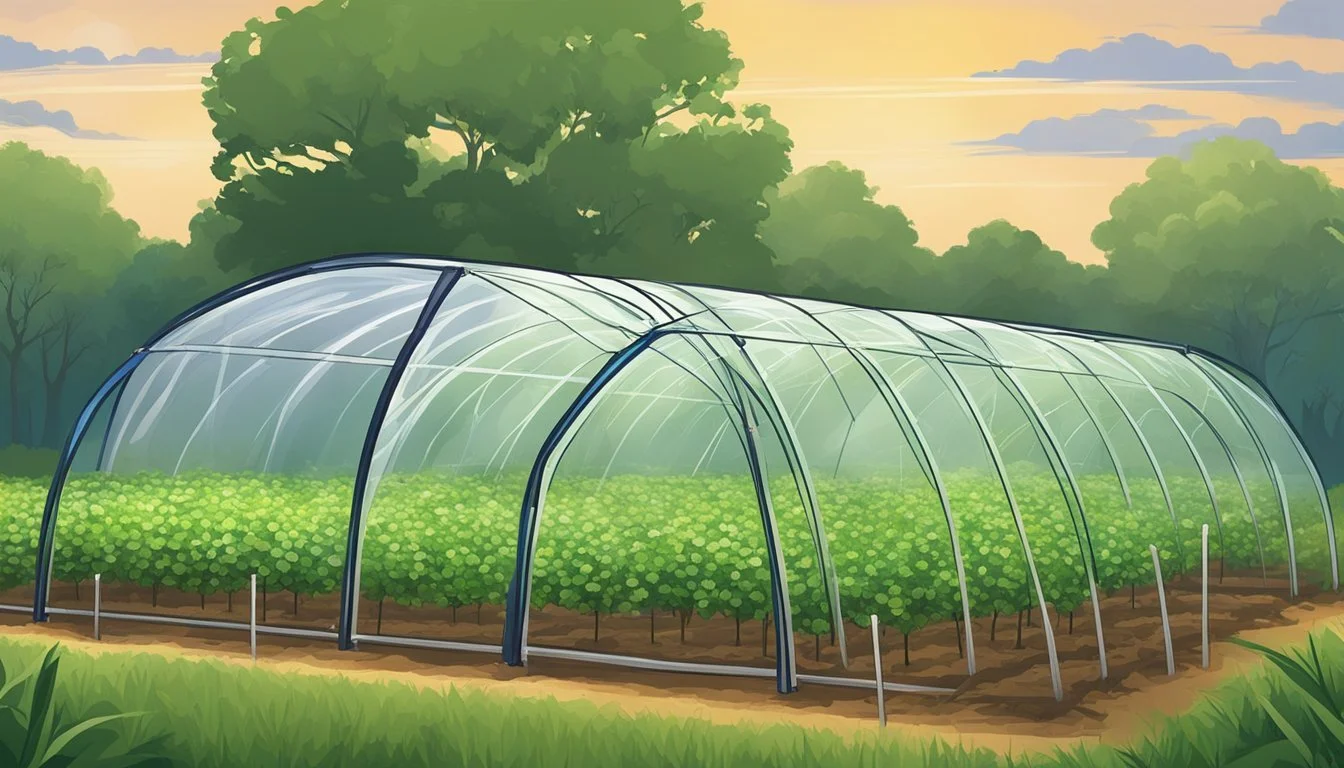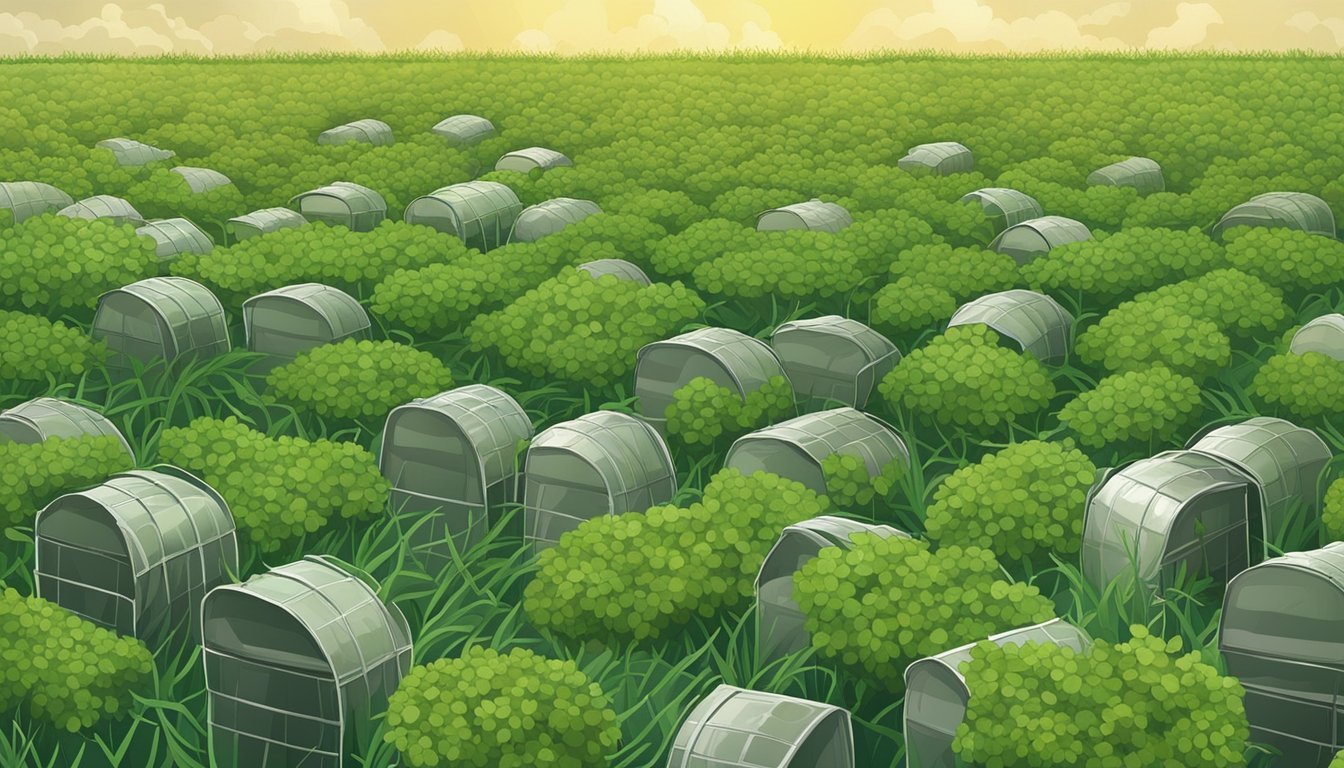Protecting Crops from Chafers
Effective Strategies for Pest Management
Chafers, a group of beetles known to horticulturists and farmers alike, can inflict considerable damage on a variety of plants. These insects are recognized by their distinctive hard shells and typically engage in feeding activities that damage crops and ornamental plants. The issue with chafers arises when their larvae, commonly referred to as grubs, feed on roots, while adults consume the foliage and flowers, leading to weakened plants and reduced yields.
Effective control methods are crucial for protecting crops from the destructive appetites of chafers. Implementing preventative measures as well as timely interventions can mitigate the impact these pests have on agricultural and landscape plantings. Physical barriers, such as row covers, provide straightforward protection for vulnerable crops against adult chafers.
Understanding the lifecycle of chafers, which includes stages from egg to adult beetle, aids in the implementation of targeted control strategies. For instance, catching the early emergence of these pests can prevent the subsequent laying of eggs and the proliferation of larval populations that damage the roots of plants. Combining knowledge of chafer behavior with informed agricultural practices offers a reliable approach to preserving crop health and maintaining production levels.
Understanding Chafer Beetles
Chafer beetles can wreak havoc on a variety of plant species, causing significant damage to lawns, crops, and ornamental plants. This section provides insights into their complex life cycles, the different types of chafer beetles, and how to identify the damage they cause.
Life Cycle of Chafers
Spring: During spring, the overwintered larvae of chafer beetles begin to feed on plant roots, causing substantial damage to grass and crops. As the season progresses, they mature and turn into pupae in the soil.
Late Summer: The pupae develop into adult beetles, which will emerge from the ground to mate.
Fall: After mating, females deposit eggs back into the earth, which hatch into larvae, perpetuating the cycle.
Chafer beetle larvae develop fully by the following spring, where the cycle starts anew. Adult chafers live above ground for only a short period.
Types of Chafer Beetles
European Chafer (Amphimallon majale) causes severe damage to turf due to its grub feeding habits.
Rose Chafer (Rhizotrogus majalis) is particularly known for attacking flowers and grapevines, apart from being a common turf pest.
Japanese Beetle (Popillia japonica) and Green June Beetle are other chafer species whose larvae are known as grubs causing similar issues in lawns.
Each species has distinguishing features, but they all share a similar dependency on healthy soil for their reproductive cycles.
Recognizing Chafer Damage
Grub Damage: Look for irregular patches of wilting grass or plant life. The presence of chafer grubs can be inferred from the ease of lifting the turf like a carpet, exposing the grubs beneath.
Adult Damage: The adults feed on and skeletonize the leaves of trees and flowers, leaving behind a distinctive pattern of damage where only the veins remain intact.
Understanding these patterns is vital for taking timely action to protect vegetation from chafer beetles' deleterious effects.
Prevention Strategies
In addressing chafer infestations, prevention is imperative. Strategic planning and implementation of various control methods can greatly reduce the likelihood of extensive damage to crops by these pests.
Cultural Practices
The foundation of chafer prevention lies in cultural practices. Regular mowing and adequate fertilization promote a vigorous and healthy turfgrass, which can tolerate and recover from chafer damage more effectively. Additionally, practices such as irrigation management play a significant role. Overwatering should be avoided, as it can create favorable conditions for chafer grubs.
Natural Predators
Leveraging natural predators is an environmentally friendly approach to managing chafers. Birds and parasitic nematodes are effective biological controls that feed on chafer grubs. Introducing or encouraging populations of these predators can help keep chafer numbers in check. For instance, encouraging birds by installing birdhouses or baths near affected areas can recruit natural allies in the fight against chafers.
Physical Barriers
Physical barriers serve as a shield between chafers and valuable crops. For small-scale gardens, floating row covers provide an effective deterrence against adult chafers laying eggs in the soil. Additionally, treatments such as soapy water can be used to suffocate grubs when they are spotted. For larger turf areas, specialized netting or mesh can prevent chafers from reaching the soil to lay their eggs, thereby interrupting their lifecycle.
Control Measures
Effective control of chafers in crop protection involves an integrated approach combining chemical, biological, and behavioral strategies. Employing these measures can mitigate the damage caused by chafers to ornamental gardens, turf, and agricultural settings.
Chemical Control
Farmers and gardeners can utilize a variety of insecticides for chafer control. Chemical control typically involves applying products that contain imidacloprid, carbaryl, permethrin, bifenthrin, cyfluthrin, chlorantraniliprole, thiamethoxam, clothianidin, or trichlorfon. These chemicals can be effective, but they must be used judiciously to minimize environmental impact.
Carbaryl and Permethrin: Often applied to control adult chafers during their flight season.
Imidacloprid and Clothianidin: Systemic insecticides used to target the larvae stage.
Bifenthrin and Cyfluthrin: Synthetic pyrethroids that can offer longer residual control.
Biological Control
Biological control leverages natural predators and pathogens to manage chafer populations. One of the most effective agents is the entomopathogenic nematode, Heterorhabditis bacteriophora, which infiltrates and kills chafer larvae.
Nematodes: These microscopic worms can be watered into the soil to target larvae.
Toxins: Certain strains of bacteria produce toxins that are lethal to chafers.
Behavioral Control
Behavioral control aims at disrupting the normal activities of chafers such as mating and adult flight, typically around dusk. This can be achieved through:
Mating Disruption: Utilizing pheromones to confuse or inhibit the mating process.
Habitat Alteration: Implementing cultural practices to make the environment less attractive for egg-laying females.
Identifying Prime Conditions for Infestation
Effective management of chafer grubs starts with recognizing the environments and times they are most likely to cause infestations. The type of soil and the season heavily influence the likelihood of an infestation taking root in a crop.
Soil Types and Conditions
Chafer grubs thrive in certain soil types and conditions. They are especially prevalent in sandy soils, as these soils provide an ideal environment for the grubs to move easily and access roots for feeding. Soils that are well-drained and warm tend to attract chafer beetles for egg-laying. Once hatched, the grubs will feed on the roots of plants, which can lead to significant damage if not managed properly.
Seasonal Patterns
Seasonal patterns significantly affect chafer infestations. Generally, the prime time for adult chafers to emerge, mate, and lay eggs is from late May through July. During this period, adults are actively seeking out optimal areas for the next generation. Monitoring these patterns is crucial; grubs are most destructive late in the summer and early fall, following hatching. It should be noted that while the specifics can vary regionally, the cycle of emergence, mating, and laying eggs tends to be consistent annually.
Monitoring and Detection
Effective monitoring and detection are crucial for protecting crops from chafers, which involves systematic visual inspection and soil analysis. Identifying both adult beetles and grubs early on can prevent significant crop damage.
Visual Inspection for Adult Beetles
One commences with the visual inspection for adult beetles, typically characterized by their reddish-brown, shiny exoskeletons. They often reveal themselves in the evenings, which is the optimal time for detection. Gardeners should pay attention to the beetles' reddish legs, a distinctive feature that aids recognition.
Grub Inspection in Soil
Inspecting for grubs constitutes a hands-on approach: one must sift through the soil to spot the C-shaped white grubs with brown heads. These grubs are distinct in appearance, possessing a unique raster pattern beneath their abdomens. Monitoring for such grubs is best done in the late summer to early fall when they are close to the surface and feeding actively.
Impact on Agriculture and Gardening
Chafers, particularly the rose chafer, are known to cause noticeable damage to a range of agricultural and ornamental plants. While their impact varies by region and plant species, it is critical for growers and gardeners to recognize and manage these pests to protect their crops and gardens effectively.
Impact on Commercial Crop Production
Commercial agriculture contends with considerable losses due to chafer activity. Their larvae, often C-shaped grubs, dwell in the soil and can damage the root systems of grape vines and cherry trees. In adult form, chafers are known to defoliate a wide array of plants, with a marked preference for the blossoms of fruit trees and the leaves of vineyards, affecting both the quality and quantity of the produce. Infestations are more pronounced during the adult emergence period, typically aligning with grape bloom time, and can last for 3 to 4 weeks. Efficient timing of pest control measures is critical to mitigate the damage in commercial settings.
Effects on Home Gardens
Home gardens face a similar plight with chafers, particularly concerning the aesthetic and health of flowering plants such as peonies and roses. The adult chafer feeds on flower petals and leaves, disfiguring blooms, and in severe cases, may compromise the plant's health. The impact on home gardens can be both visually displeasing and disheartening for the gardener. Adhering to recommended practices for chafer control, including proper lawn management and timely interventions, can lessen their detrimental effects on garden aesthetics and the vitality of ornamental plants.
Frequently Asked Questions
This section addresses common concerns about managing chafer beetle infestations and delves into various control strategies and preventative measures.
How can I control rose chafer infestations in my garden?
Control of rose chafer infestations involves timed applications of appropriate insecticides, physical barriers like cheesecloth, and prompt removal of the beetles by hand when spotted.
What are some effective insecticides for eliminating rose chafers?
Insecticides such as pyrethrin are labeled for controlling rose chafers and can be effective when applied while the beetles are most active.
What methods are available to prevent rose chafer damage on crops?
Preventive methods include physical barriers to protect crops and adjusting planting schedules to evade the peak activity of the rose chafer.
What natural predators help in controlling chafer populations?
Birds, frogs, and some insect predators contribute to the natural control of chafer population levels within an ecosystem.
How to manage spittlebugs that are harming my plants?
For managing spittlebugs, one can remove the frothy 'spittle' masses to expose the bugs and apply insecticidal soaps or oils targeted towards the nymphs feeding within.
What are the characteristics of Japanese beetles that affect elm trees?
Japanese beetles skeletonize elm leaves by feeding between the veins and can be identified by their metallic green and coppery brown wing covers.







